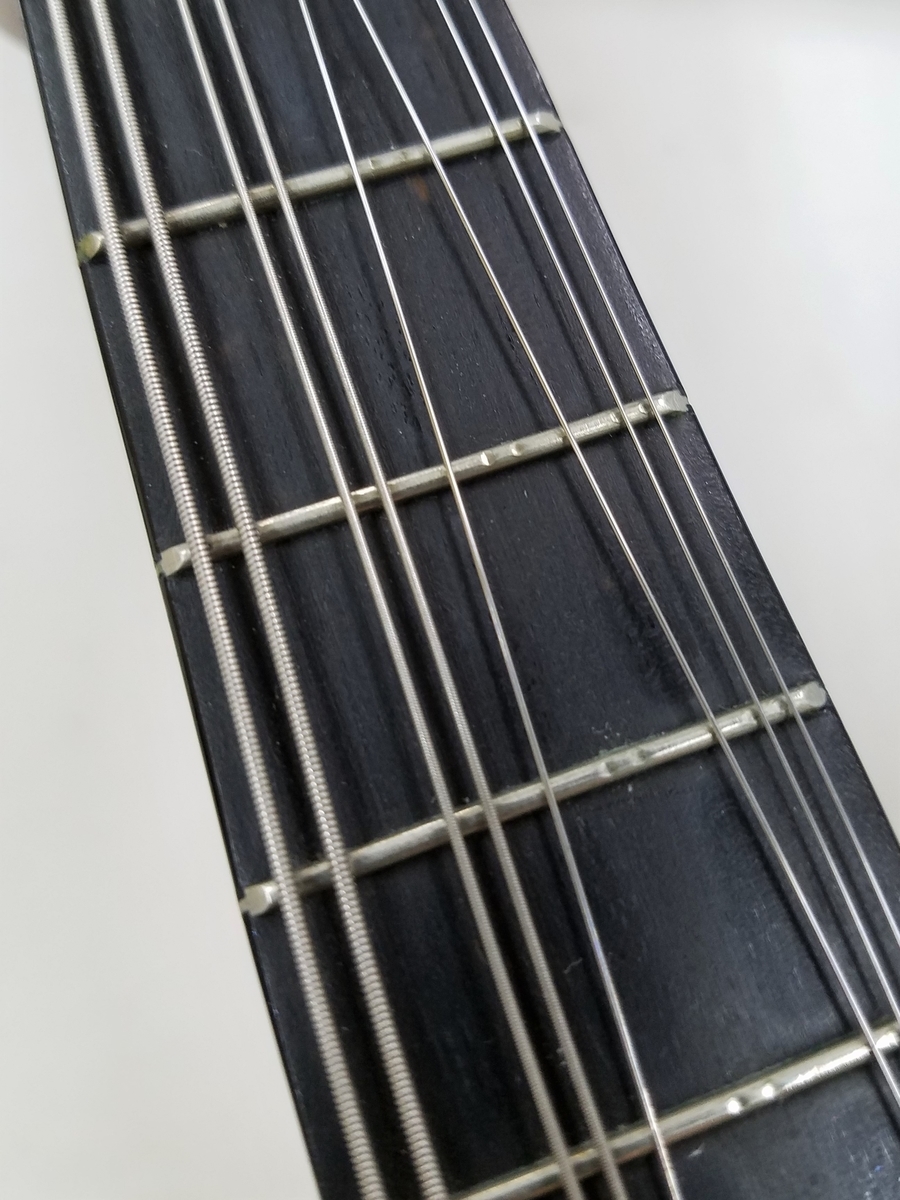"Frets" are multiple metal bar-shaped parts that are driven into the fingerboard, and instruments with frets, such as mandolins and guitars, are sometimes collectively referred to as "fret instruments."
With frets, you can easily produce sounds at precise pitches, just like pressing the keys on a piano.
*On the other hand, instruments without frets, such as the violin, can be said to be more difficult because you have to find the pitch using only your fingers and ears.
Frets are very convenient, but they are also something you need to be careful about when playing a musical instrument. This time, we will explain in detail about the maintenance of such frets!
【table of contents】
①Frets are consumables
At first glance, the frets are made of metal and look very sturdy, but they are actually consumable items in the long run. If you play for many years, the force with which you press the strings in your left hand will gradually wear them down and cause them to wear out.
The speed at which the frets wear out varies from person to person, and the more strongly you press the frets, or the more frequently you play the instrument, the faster the frets will wear out.
Some maintenance may be required as early as 1 to 2 years from new condition.
When the number of frets decreases, a dent will form under the string ↓

②What happens if the frets wear out?
As the number of frets begins to decrease, the cross section of the fret, which was initially semicircular, gradually becomes more like a trapezoid with a flat top. When this happens, the area of contact between the fret and the string becomes larger when the string is pressed, resulting in a shorter sustain or a harsher tone.
Furthermore, as the frets wear out, a crackling noise may be heard or no sound can be produced.
Also, the number of frets does not decrease evenly, and the more frequently you use them, the more they decrease.
On a mandolin , the low position of the A string (up to around the 5th fret) and on the guitar, the 2nd fret of the 3rd string are particularly susceptible to wear and tear.If you hear a popping noise only when you press a certain note, it is due to fret wear. is most likely the cause.
If you have noticed that the noise has become more likely to occur recently, or that the sound is getting worse, you may need to maintain your frets.
The more frequently you play, the more you need to pay attention to the condition of your frets!
③Fret repair method
If the number of frets decreases and it interferes with your playing, you will need to have it maintained at a music store.
Here we will introduce two methods!
〇Fret exchange
As the name suggests, this repair involves removing all worn out frets and replacing them with new ones.
When we remove the frets, we also correct the warpage of the fingerboard, so instruments with warped necks will also require this repair.
Depending on the frequency of use, it is often recommended to replace the frets of a mandolin every 5 to 10 years.
The neck and fret area will be in almost new condition , so this repair is highly recommended for those who want to improve the condition of their instrument!
〇Fret alignment (fret adjustment)
This is a repair method that involves sharpening worn frets and adjusting the height and shape.
The main advantage is that it is cheaper and has a shorter delivery time than fret replacement.
However, since the frets are trimmed and trimmed, if there is not a certain amount of fret left, the full effect may not be obtained and the process may not be possible.
Also, since fret alignment will make the frets smaller, it is a difficult repair to repeat.
lastly
Even if the frets look sturdy, they will eventually need to be replaced.
The loss of frets is a sign of playing a lot, but with proper maintenance, you can enjoy playing with even better sound.
If you have any discomfort with the sound of your instrument, please feel free to contact us!
Until the end Thank you for reading!
Click here for information on repair and maintenance↓
http://www.ikegaku.co.jp/repair.htm
Author: Ken Natori




